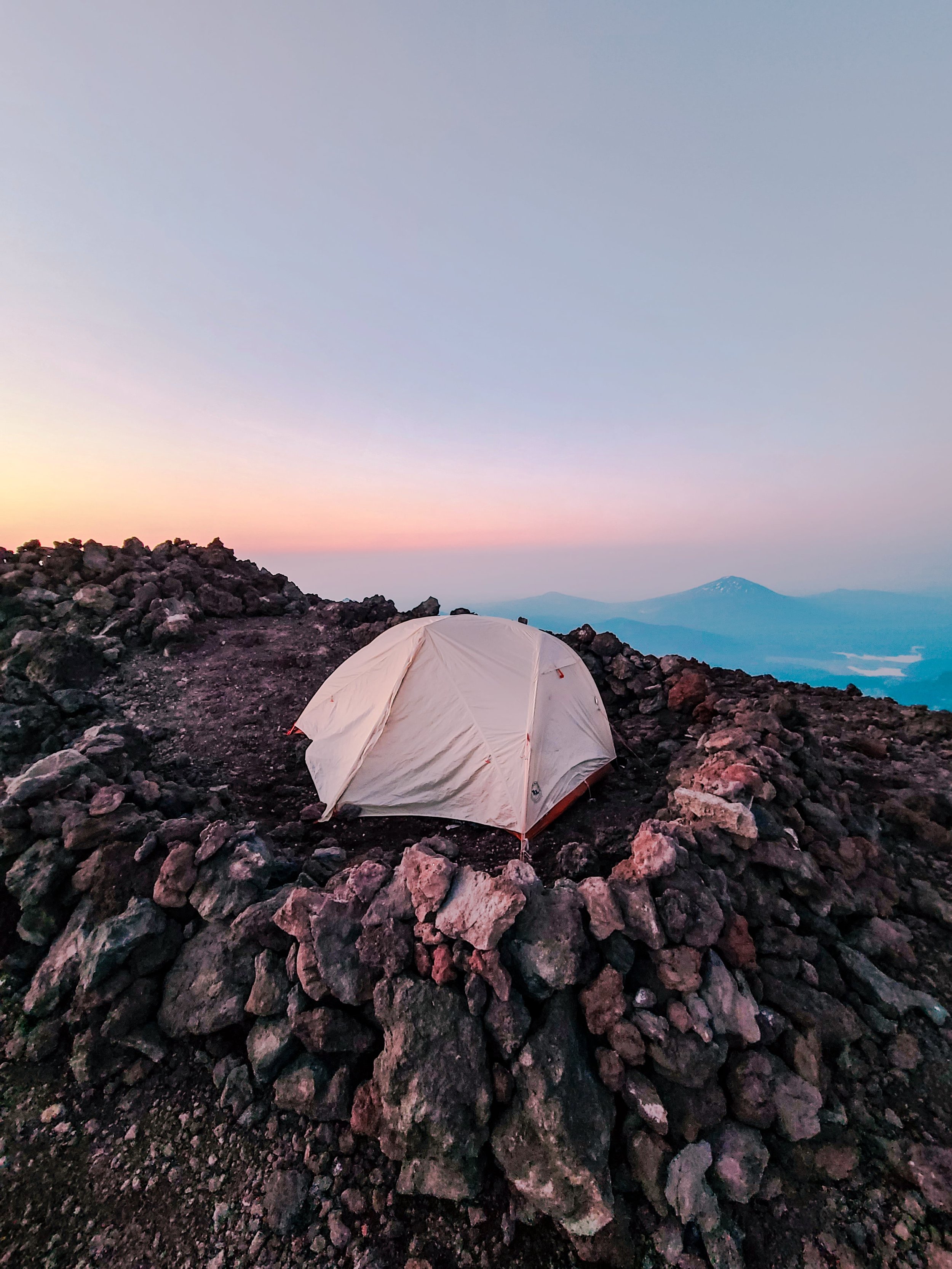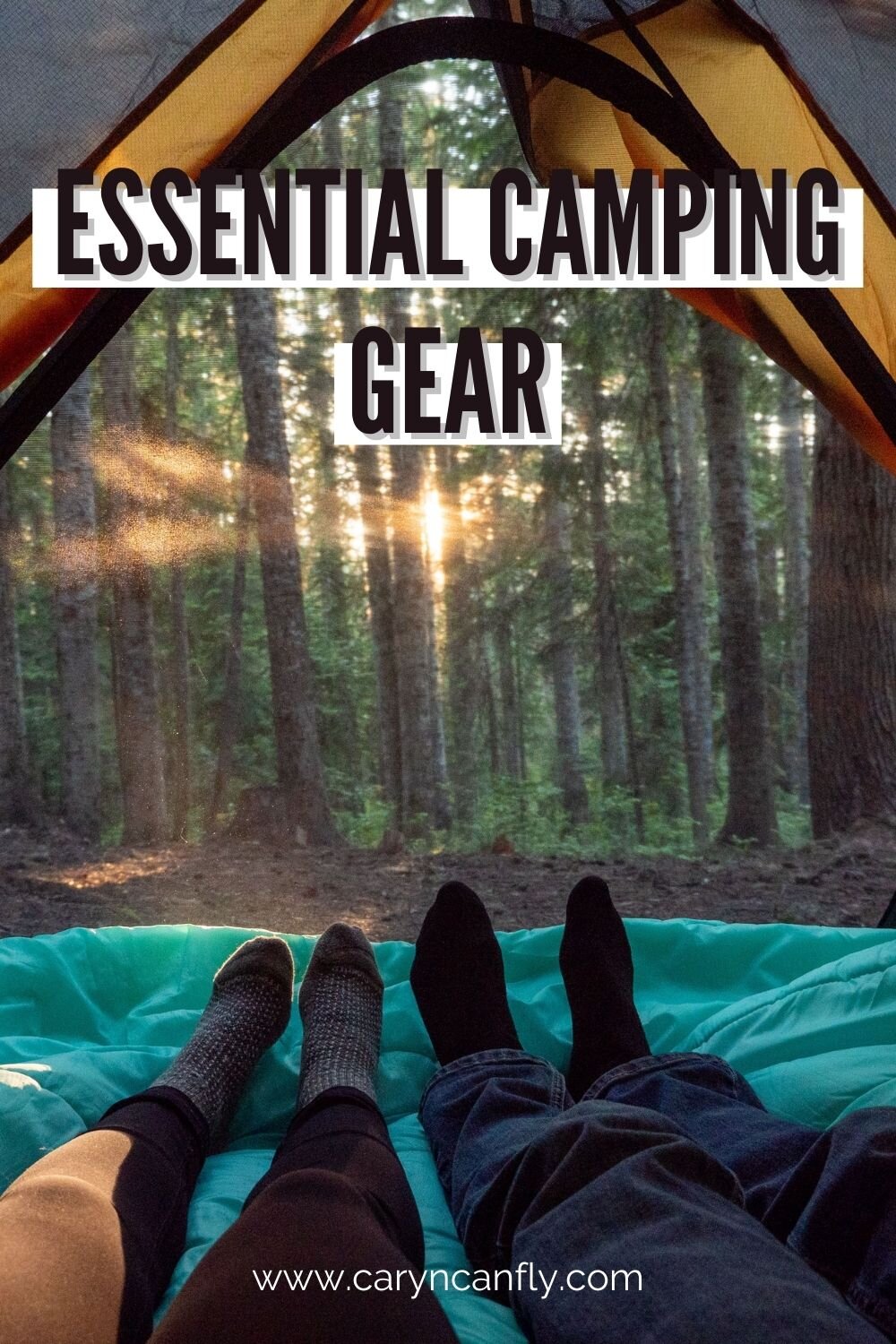10 Pieces of Essential Camping Gear
If you’re a newbie camper or you’ve always borrowed camping gear, this essential list will hopefully help you figure out what you’re missing or provide a nice guideline for what to buy. Keep in mind if you are a newbie camper, I suggest starting out by borrowing gear and slowly adding to your collection as you go on, so you know what you like and what you don’t. For example, I dislike plastic gear and blow-up beds and, I love airy tents with rainproof bottoms, and lightweight, classic-looking gear. Then you know exactly what you’re going to buy when you decide to get your own.
Disclaimers: This article contains affiliate links that help support me and allow me to continue to make content for you! If you click on one and buy something, I may get a small commission at no extra cost to you. Please use my links to help support me so that I can start bringing bigger and better projects your way!
All images and videos on this website are owned by Caryn Wells and Zack Blake unless otherwise stated.
Related Posts:
A Good, Sturdy Tent:
For your first purchase, I suggest a good tent or other sleeping structure. Some people prefer to go without a tent and sleep under the stars, others prefer a hammock between two trees, and some people like to just use a couple of tarps. Whichever person you are, make sure you find a good option for you. I prefer a tent that has good ventilation or a hammock with a bug net and rain cover.
The top two images are of our bright orange camping tent, the REI Grand Hut 4. I love it because you can stand up in it! That makes it a lot easier to change. There’s also more room for gear that we’d rather stay in the tent with us. For a big tall tent like this, it’s best that you make sure you use your guy lines so your tent doesn’t blow away.
The bottom two images of the pictured cream-colored tent is the Big Agnes Copper Spur tent that Zack and I use for backpacking. It’s a two-person tent, so it’s a lot smaller. You definitely can’t stand up in it or anything, but I do love it for photos while backpacking. It’s also incredibly lightweight!
Tent Tip!
Make sure you set up your gear at home before taking it out on a trip. You can set it up in your backyard or living room. I actually set mine up in the park across the street first since we didn’t have enough room! This way you can see if anything is missing from your setup. One of our tents was missing a stake for one of the vestibules, so we ordered a few lightweight replacement stakes.
With any tent, make sure you have some guy lines. Guy lines ensure that your tent is secure and that it won’t blow away, which is much more likely to happen if you have a tall tent (like our REI Grand Hut). I’ve had a couple of tents blow away in my early camping days. A lot of more expensive tents have guy lines already included, but it’s a good idea that you already know how to attach and adjust them before your trip.
A Warm Sleeping Bag:
No matter your sleeping situation, you should definitely have a sleeping bag and a pillow sorted out. It can be hard to pick out a sleeping bag if you’re not really sure where to start. I suggest a sleeping bag with a temperature rating of 20° F (-6° C) for most people. Use your judgment based on whether or not you’re a cold or warm sleeper for going over or under this temperature rating.
Even if you’re planning on sleeping in a hammock, you should still have a sleeping bag; one that is suitable for the weather you’ll be experiencing. Also, think about purchasing an underquilt for your hammock. It’ll keep you warm during colder temperatures. You might already know what I mean if you’ve ever tried sleeping in a hammock. An underquilt eliminates the cold draft under your hammock by insulating you better than just your sleeping bag since a sleeping bag will compress under your weight.
If you’re traveling with your partner, consider finding sleeping bags that can zip together into one big cozy burrito!
Firewood and Fire Starters:
Before we talk about starting a fire, it’s your responsibility to know the rules. Go by the local fire regulations for open flames (this includes stoves and other cooking methods!). If there’s a ban, please follow it.
Also, consider not having a fire at all. Wildfires have been a huge issue in recent years, and many of these incidents are caused by people not doing the right thing or not following basic fire safety. You can still have fun without a fire when you’re camping.
Avoid having a fire in the wilderness. Yes, some wilderness areas allow fires. However, the smart thing to do is not to have them. Fires are very damaging to the backcountry and that’s a place that should be protected so we can continue to enjoy it. So kindly refrain from starting fires in areas where it wouldn’t be wise to have fires.
Here are some quick-fire regulations to digest:
Only start fires in prebuilt firepits and do not dismantle them so that other people will not make fires in other places.
Build a safe fire. It doesn’t need to be a roaring campfire for you to cook and stay warm.
Mind your matches. Be sure to make sure they’re completely out or place them into the flames. Please don’t use lighter fluid since it can accidentally cause fires outside your firepit.
Keep a bucket of water and a shovel close by to extinguish the flames. Water is great for dousing any runaway flames and the shovel is to suffocate the flames.
Keep all of your items, especially flammable ones (bug spray, unused firewood, etc) 15ft away from your fire.
Pay attention to the wind. A strong gust of wind can instantly spread your campfire to a wildfire.
Be careful with kids and pets.
Never leave your campfire unattended
Properly put out your fire every time. Dump water on the flames, stir the ashes with your shovel, then dump more water on it. Your campfire should be cold before you leave it unattended. If it’s too hot to touch, it’s too hot to leave.
I suck at building fires (I’m learning!), but I can keep one going. If you’ve never started a fire before, you definitely want to make sure you have decent fuel and a way to start your fire until you learn to build one yourself. You could use biofuel starters, instant fire squares, smokeless fire tablets, or just basic kindling and dry leaves to help you start your fires. Just make sure that you buy wood close to where you’re camping so that you don’t promote the spread of invasive species.
Cooking and Mess Kit:
Having a mess kit or a cooking kit is a necessity. You need something to make those hot dogs and morning coffee or tea. I usually bring some sort of cooking surface, cooking utensils, a cooler, a water heater, a place to keep trash, and a can opener at the very least. Never forget your can opener or you’ll be sorry! I also recommend investing in some reusable dishware instead of using paper and plastic for your camping trips. It might be easier in your opinion, but the earth will thank you for washing your dishes and so will your wallet. Just remember to properly dispose of your wastewater away from natural water sources and use biodegradable soap. If you’re at a campground, they may have a specific place to dispose of water, so make sure you check.
In a lot of campsites bear safety is really important. Make sure you store your food in a bear-safe container or in a provided bear locker when needed. Many campsites in bear country require you use the provided bear lockers if they have them available. If you don’t you could forfeit your camping spot, so make sure you follow these rules and report and bear sightings to rangers. These things will help keep you, everyone else, and the bears safe.
Water Container:
This one is less obvious but still essential. Bring a water container. A big water container. Bring a large supply of water just in case your campsite doesn’t have a clean water source. This is especially essential in autumn (or winter) camping because campsites start winterizing their pipes for freezing temperatures and you could be left without water. It’s always better to be safe than sorry. We have a large collapsible water container made of silicone. We are always trying to find ways to cut down on our use of plastics. Instead of a giant crate of plastic water bottles, use something that will last you a long time and that you can use over and over.
Make sure you have a fresh supply of water for the duration of your trip. You would be surprised by how much water you use in one day. We like to use the rule of thumb, 2 gallons of water per person per day. Remember that we do more with water than just drink it!
Camping Chairs:
I hate when I forget my camp chairs, they always end up being the things I accidentally leave behind if I’m not using a list. Sitting on a log at your fire pit or picnic table is definitely not the most comfortable way to camp. There are even ones small enough to strap on your pack and take hiking with you if you like to lounge and enjoy the view at the top.
Light Source(s):
Bring a light source! I like to bring lots of light sources actually. I always bring my headlamp but sometimes you want a lantern, a flashlight, or battery-powered string lights instead. All are great options. We love hanging our string lights inside our tent for some nice lighting.
Sunscreen:
Sunscreen has been saving my skin forever. I am as white as paper and sometimes I’ll burn with or without sunscreen. Even if you don’t relate, no matter what time of year it is or what the weather is, you can always get sun damage so just don’t risk it and bring sunscreen! You can even use a moisturizer that has sunscreen in it if you hate that sunscreen smell. I like to use Sun Bum sunscreen because it smells so good!
Map and Compass:
I never go without these things anymore. I’ve been stuck without a GPS or phone service way too many times and I never want to risk it again. Getting lost can really put a wrench in your plans so just learn the old-fashioned way, okay? You won’t regret it. You might even be the one who saves the day once or twice.
Board Games, Deck of Cards, Frisbee, other Sport Equipment or Games:
Entertainment is important, especially if you have a lot of downtime at your campsite. Bringing some games is always awesome. I love playing spoons, fast, or solitaire on camping trips. I also have really good memories of playing badminton and volleyball with my cousins as a child. There are all sorts of stuff you can bring if you’re creative, for example, those cool slacklines or lawn games!
Related Posts:
Hopefully, you got some tips that you haven’t heard before. I feel like it’s a good start for beginners that aren’t sure what they should start with. We all need to start somewhere. I hope this helped you build your camping kit a bit more!
Is there something missing from this list? Do you have any content ideas that you’d like to see from me? Let me know of any thoughts and suggestions you may have in the comments down below!
You can also follow Zack and me on social media if you want to ask any questions or talk to us! We post a lot of travel photos, travel hacks, and short, silly travel stories. I love having good conversations on social media! All of my social links are directly above the comment section! See you there!
Stay safe and explore responsibly,

















